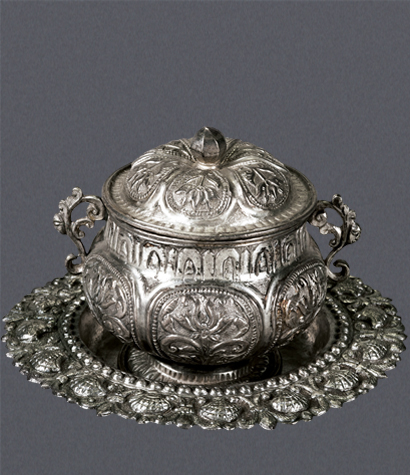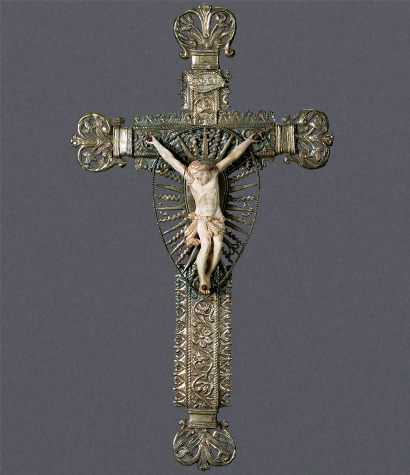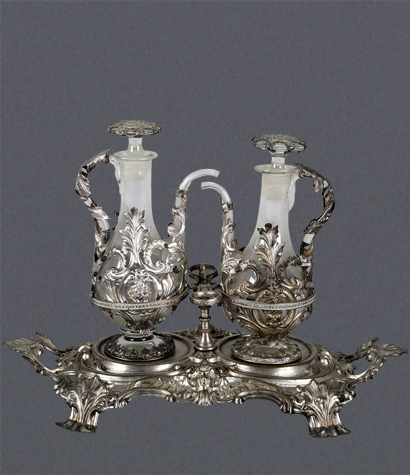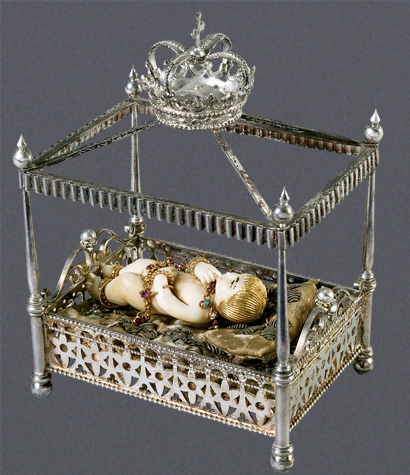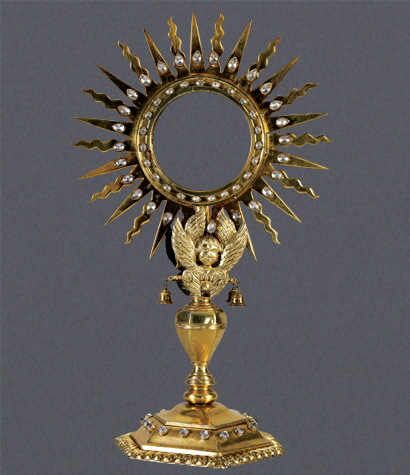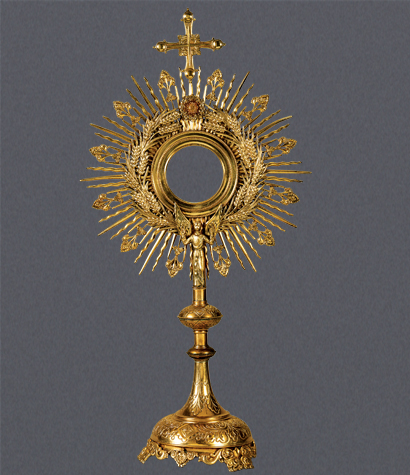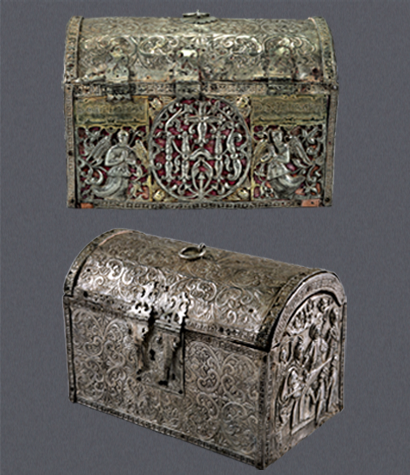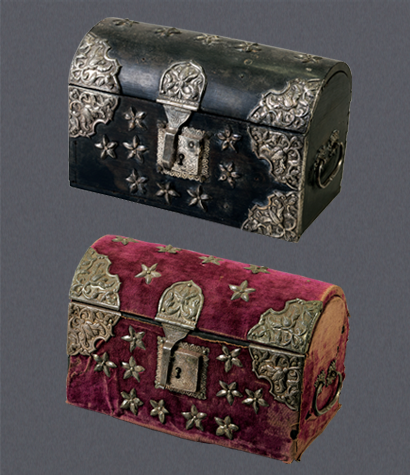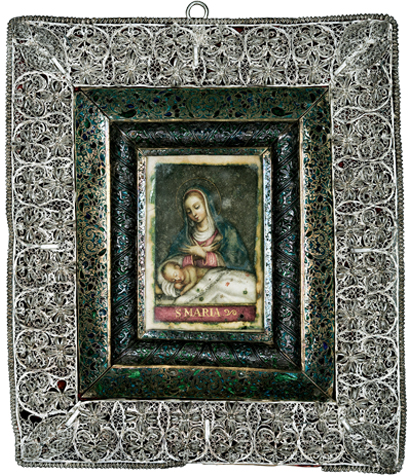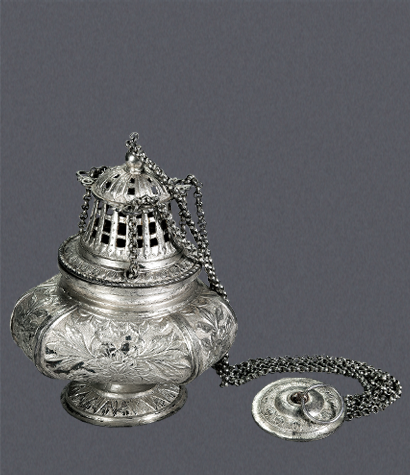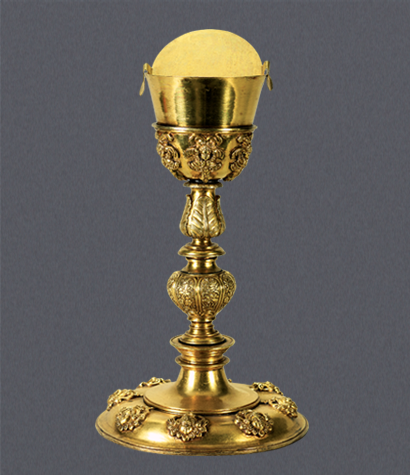
A chalice is a sacred vessel used in the celebration of Mass. It holds the wine and water that are transformed into the Blood of Christ as part of the Eucharistic celebration. Given their ritual importance, chalices are often made of precious metals, and ornate in design.
Made of gilt silver, this chalice has a plain circular base with a regular pattern of small cherubim faces with ruffs that look rather like masks in relief. The long stem, Indian in style, is in three sections. The style is reminiscent of the ancient Pembarthi sheet metalwork dating to the Kakatiya dynasty in Telengana, which itself later underwent a Deccani Muslim influence. Thus, the middle urn-like section is similar to the purna kalasha used in Hindu ritual as also the Mughal guldasta (here, upturned); it is decorated with different vegetal and floral motifs, of which two are recognizable: the Mughal-style Kashmiri iris and the five-petalled Madagascar periwinkle (Catharanthus roseus, known in Ayurveda as nityakalyani), naturalized in India. The iris is sacred to the Virgin Mary in European art. A smooth ring connects this part to the topmost section of the stem, where a common European motif, the acanthus leaf, unfamiliar in the Indian context, has taken on the appearance of stylized banana leaves. Above this sits the plain false bowl decorated at regular intervals with cherubs’ heads surrounded by floral flourishes in relief. Both the bowl and paten are made of smooth gilt silver.
Patens with handles were used at Lent during Holy Week to cover the chalice with the previously consecrated wafers to be given to the faithful.
PUBLICATIONS
Museum of Christian Art, Convent of Santa Monica, Goa, India, Calouste Gulbenkian Foundation, Lisbon, 2011.

